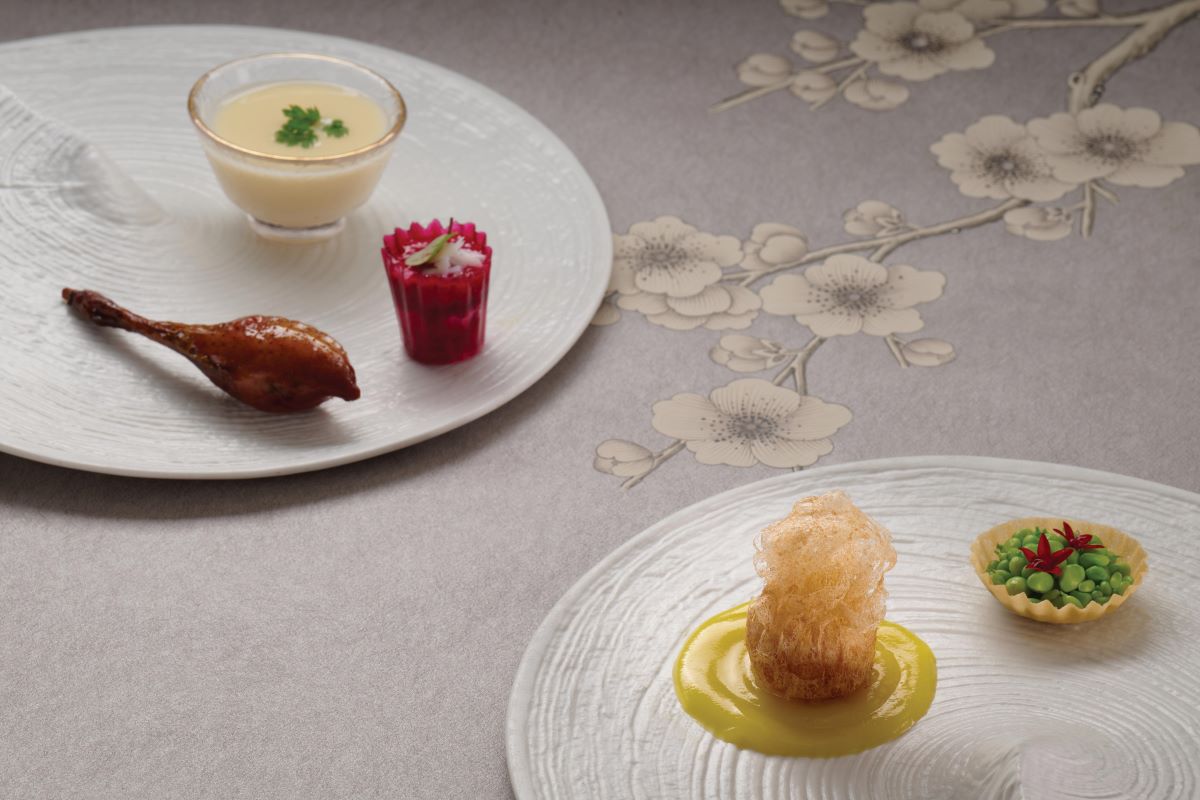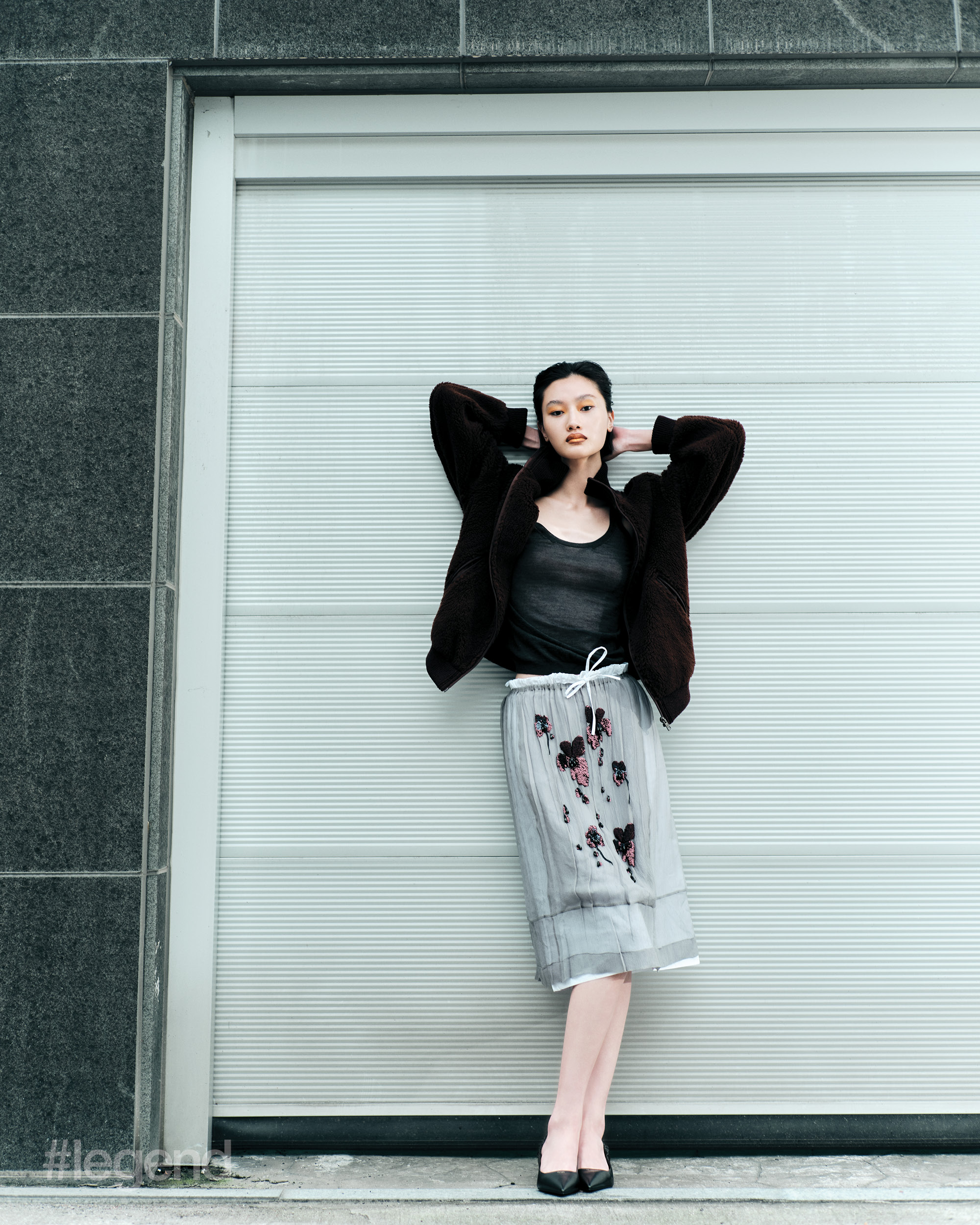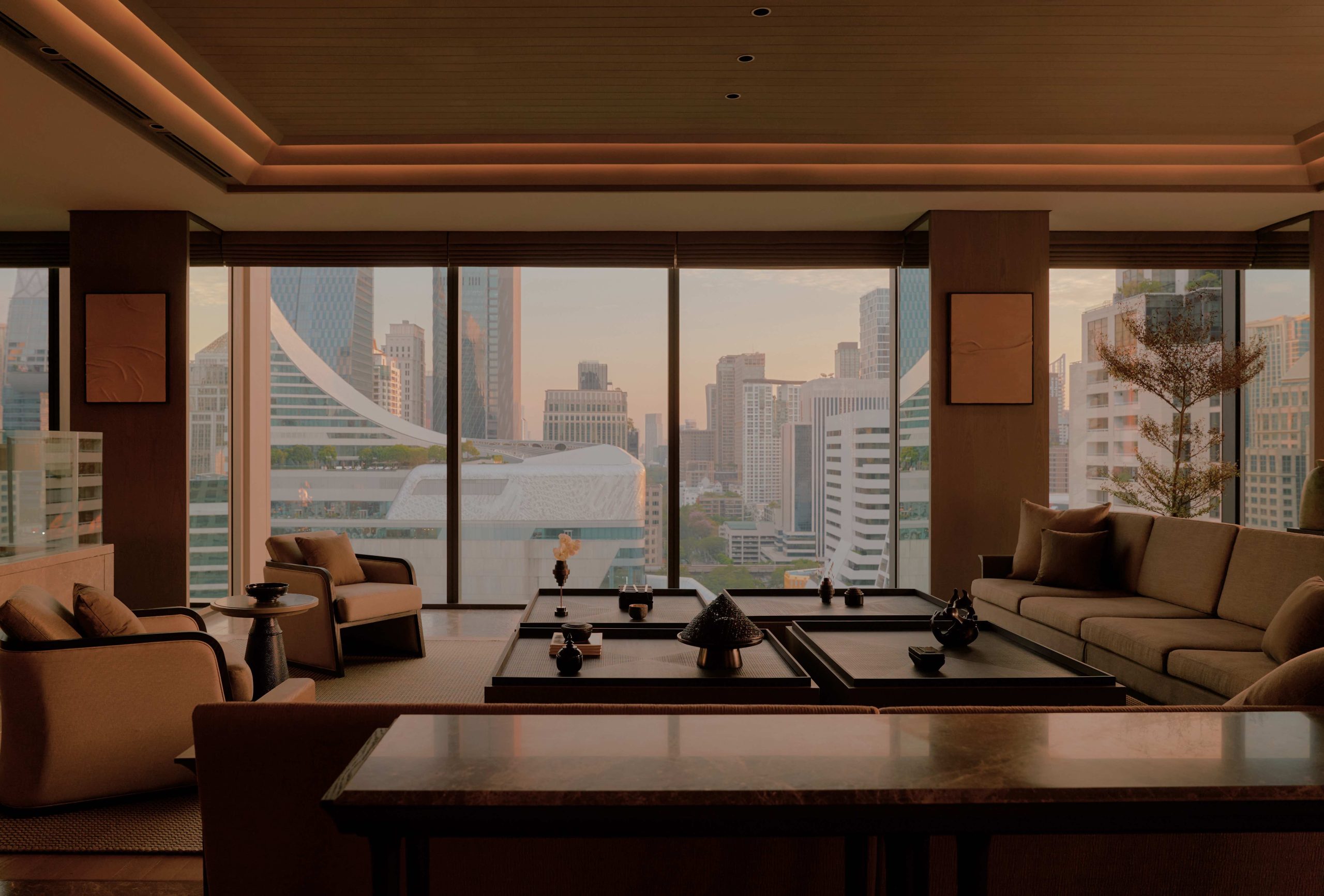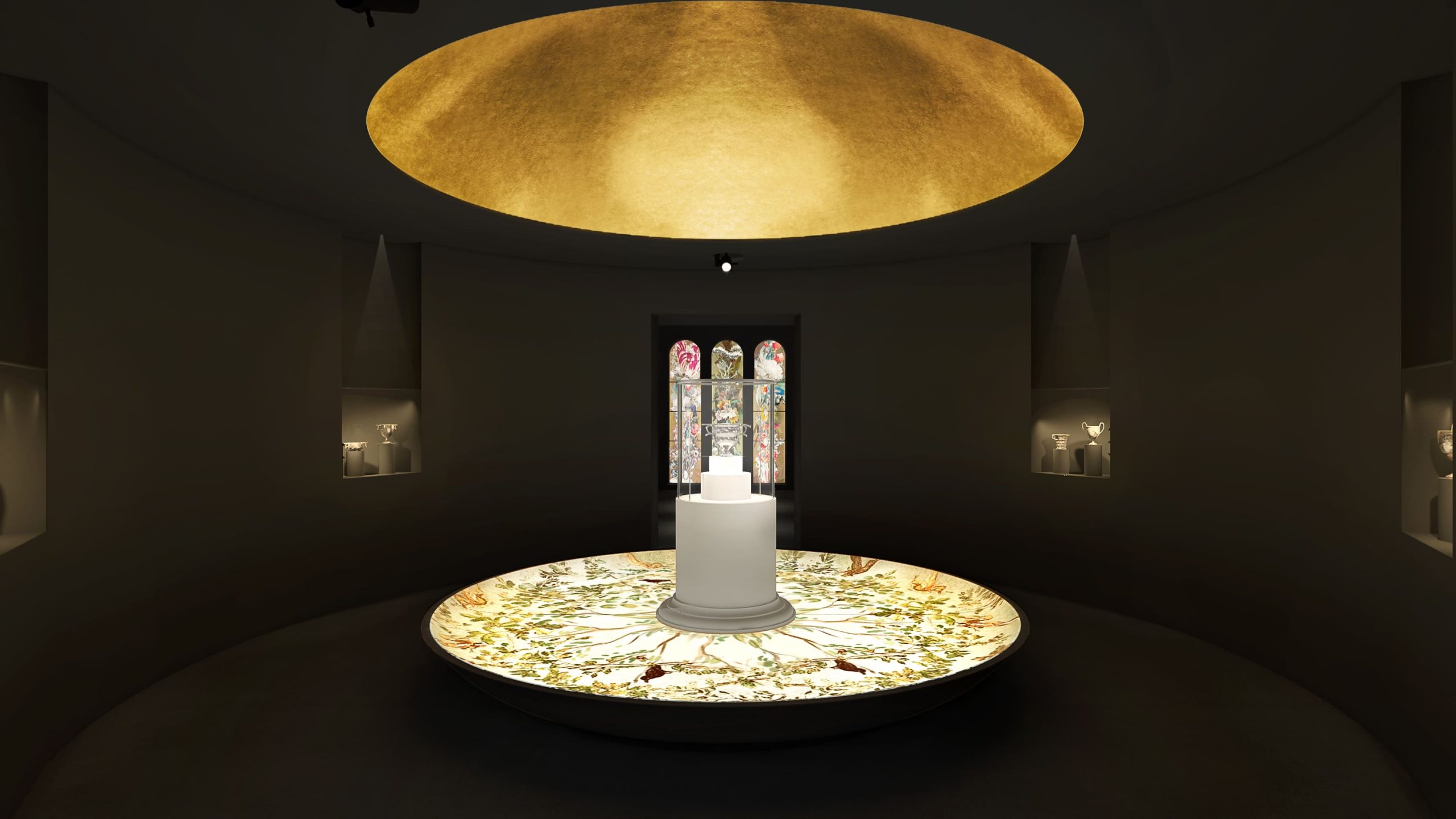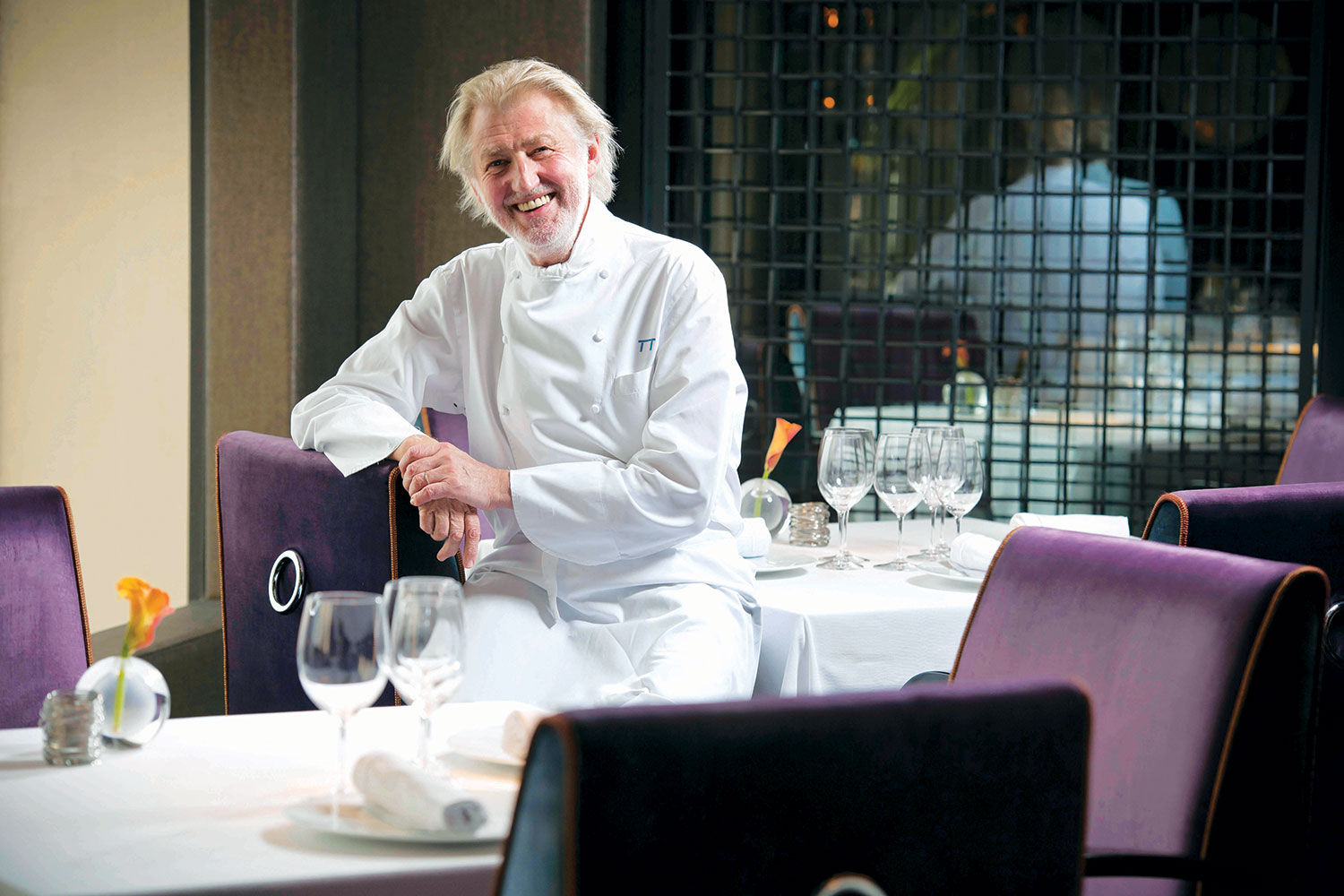
Pierre Gagnaire is the antithesis of the modern celebrity chef. You won’t see him screaming obscenities on television or hawking some useless kitchen tool. In fact, you probably won’t see him very much at all – he’s too busy keeping an eye on his 13 restaurants around the world. He visits each one multiple times a year, including the two-Michelin-starred Pierre at the Mandarin Oriental Hong Kong.
Gagnaire recently visited the city to launch a seasonal menu, an unusually grand journey for such a commonplace event. But it’s all in a day’s work for Gagnaire. Every menu is his life, he professes, and so it deserves his utmost attention. This one in particular featured dishes such as crab meat with lemon gel, Victoria pineapple veil and creamy spider crab, and a roasted grouse fillet with white bacon, and thyme, flamed in a peaty whisky. It was true Pierre: modern dishes executed with traditional techniques.
When asked how long it took to finalise the dishes, he laughs. “Two minutes! My life! Fifty years!” he says excitedly, leaning forward in his chair and obscuring the sweeping views over Victoria Harbour. “It’s impossible to deliver a time, when you don’t ask that of a painter. There’s no beginning, no end – it’s a story.” That being said, most historians agree that both the Mona Lisa and the ceiling of the Sistine Chapel were painted in approximately four years, while the musical Hamilton was written in six.
Gagnaire famously thinks of food as art – he even catalogues images of his masterpieces by name and year, as a painter would in a studio. But he is not, he insists, an artist. When asked why not, he pauses to think before replying: “An artist, he does not take just a photograph of nature; he translates nature through his spirit.”
But this is just humility, for transubstantiating reality is what Gagnaire and his protégé Jacky Tauvry aim to do at his Hong Kong pied-à-terre. He describes each new menu as a combination of himself, the season and the vision of Tauvry, the young chef de cuisine. “Day after day, he is here, so [the menus] must be Jacky,” says Gagnaire. “It’s very important that he is not me. It’s impossible. He must be himself.” This is indicative of how the renowned chef operates as a whole. He doesn’t control; rather, he guides. He doesn’t demand; he discusses. This is one of the secrets of his success.
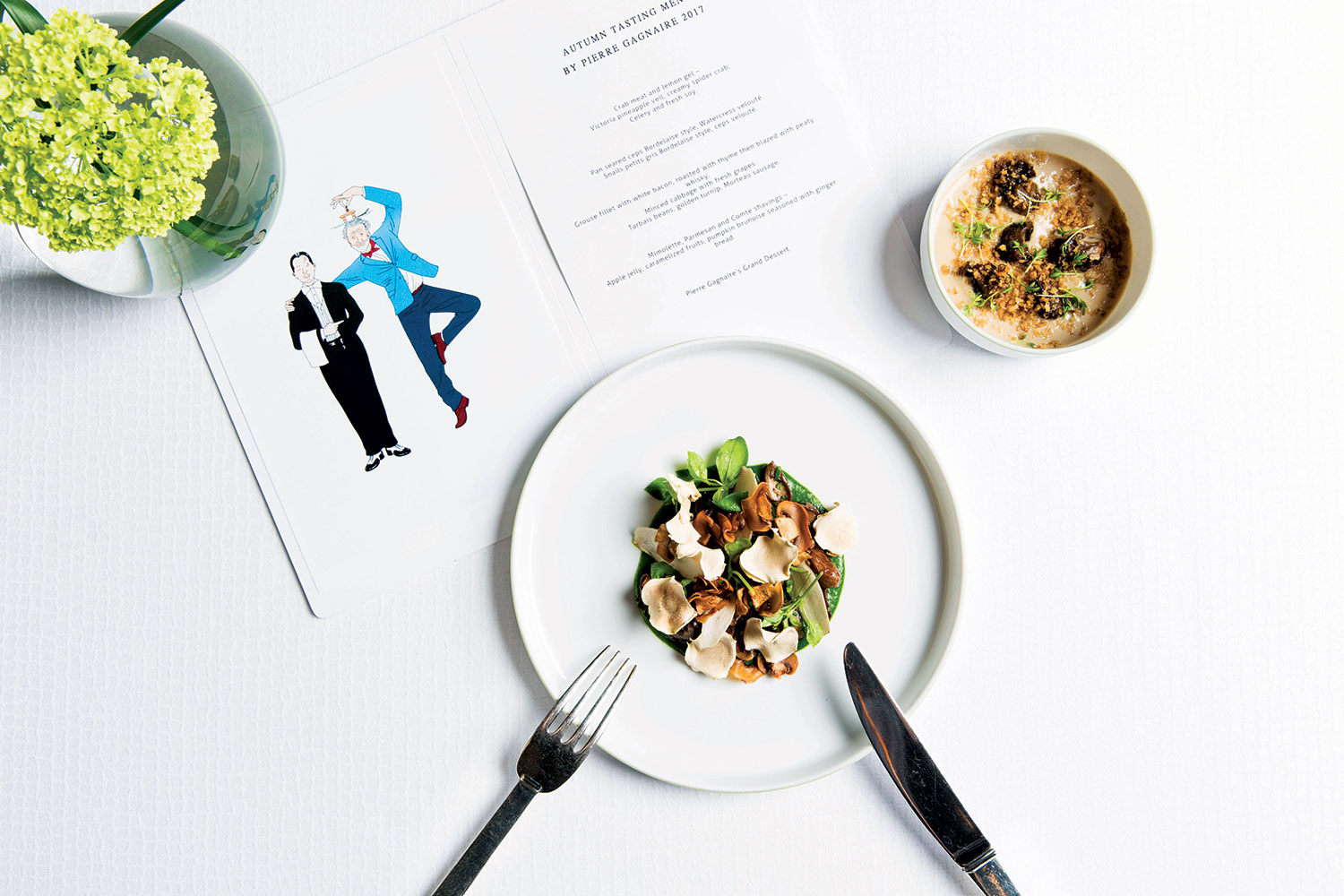
“When I began to work for myself, I had an idea about the food, the soul and the relationship between them. Nobody thought like me, you see. The kitchens were tough, aggressive, even Weinstein-esque,” he explains – a scandal everyone in the industry knew about, but no one discussed. “I thought: unacceptable. I cannot work like that.” So, he changed it. “There are too many wars in the world. In our restaurant, it is a peace area.”
Now, with a career spanning more than 50 years, Gagnaire still holds this philosophy to be true. “It’s the line of my life: to be honest, to put sincerity on the plate, to share my competence and to respect order.” This, he hopes, will also become his legacy, as he shares this ethos with the chefs he trains – chefs such as Tauvry, but also André Chiang and Richard Ekkebus. Gagnaire remembers them both fondly. Chiang, he says, was shocked by the Parisian culture, but soon “caught the spirit” and excelled. Ekkebus was much the same: “Courageous, ambitious and very focused on the work.”
Ekkebus worked at the now-closed Pierre Gagnaire in Saint-Étienne, France in 1992. It was an explosive era for Gagnaire. He would soon receive his first three-Michelin-star ranking and be named best chef of the year, but these honours would be short-lived. By 1996, the restaurant was closed, the stars were gone and Gagnaire returned to Paris, bankrupt.
Gagnaire is open about this era in his history, admitting it wasn’t easy for anyone, including the future executive chef of the Landmark Mandarin Oriental Hong Kong. “It was a lot of stress. Now I know exactly what I want and am more comfortable with myself, and more mature. It’s like being a parent. You learn to be a mother or a father – you don’t learn that in the book.”
Despite the high pressure, Ekkebus remembers the time fondly and describes Gagnaire as a one-man culinary revolution and “one of the few chef’s I wanted to work for.” Everything about the chef was an inspiration, from the way he plated, to his choice of product and combination of flavours. As a mentor, he taught Ekkebus about intuition and breaking the rules, perhaps not the legacy the Frenchman was expecting, but a fitting one nonetheless.
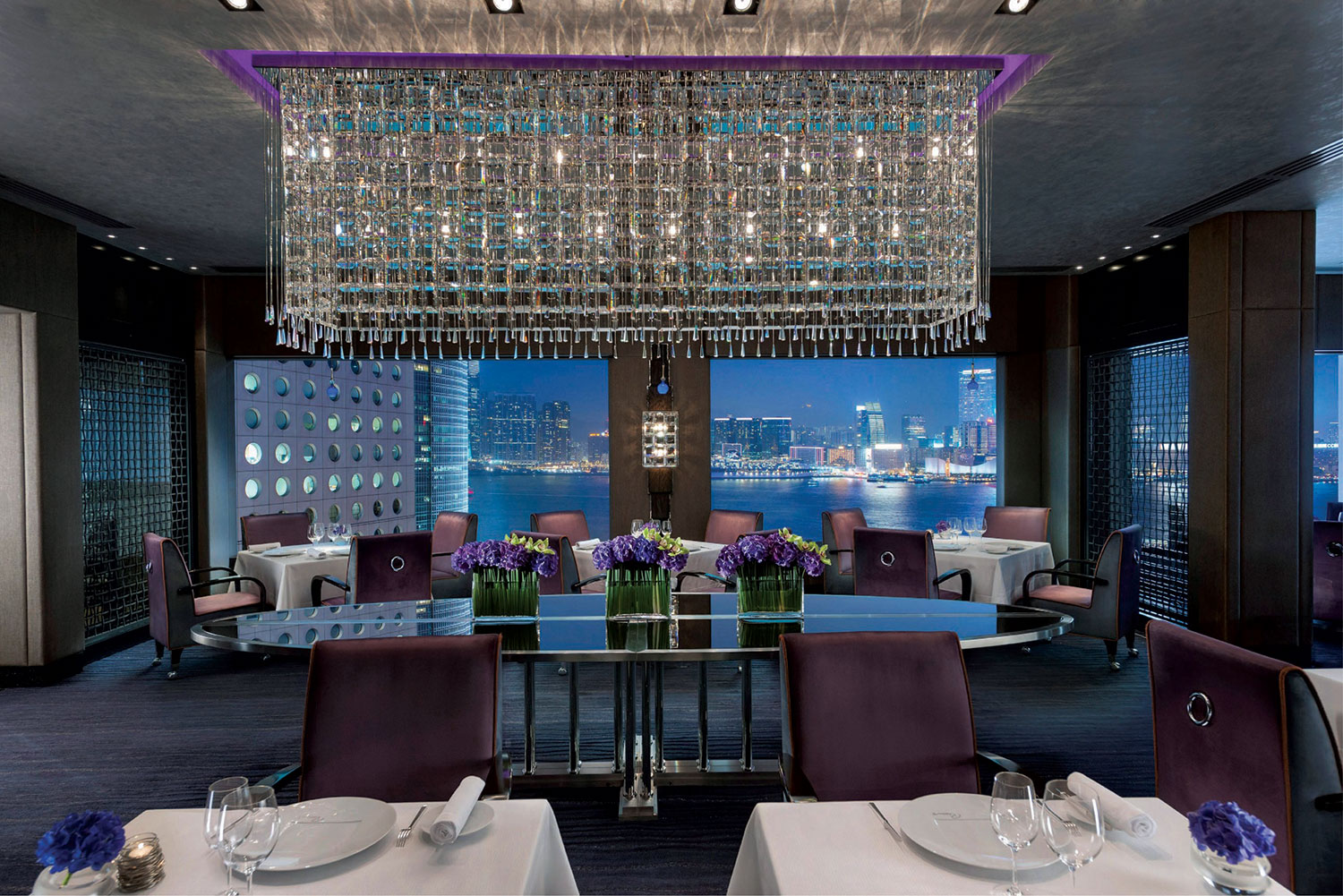
Almost three decades later, Gagnaire seems to have mastered the balance. He’s no longer a nervous new parent, but one experienced enough to know which tumbles and scrapes matter, and which do not. At no point is this attitude more evident than when discussing the Michelin Guide. Its impending release was looming at the time of the interview and while many of the city’s chefs nervously chattered about stars, Gagnaire was insouciant.
“What is important here isn’t that,” he says in reference to a possible third star. “It is to be comfortable with the guests and to have a real connection with the city. The restaurant must be fully booked – after that, it’s not our problem.” He looks at Tauvry with a smile and a shrug. “But perhaps you feel differently?”
We discuss his various restaurants and the cities where he has chosen to make his mark. Tokyo is special to him, because it was his first opening outside of Paris. Hong Kong is fantastic, because it is a seamless blend of cultures. London is different entirely; it’s the only city where he could have opened Sketch, his millennial-pink wonderland, complete with its Insta-perfect egg-shaped toilets and whimsical art. But no city is Paris. For Gagnaire, it is home and yet another key to his success. “If we have a problem in Paris, there are problems in the other place. It is the light of my life.”
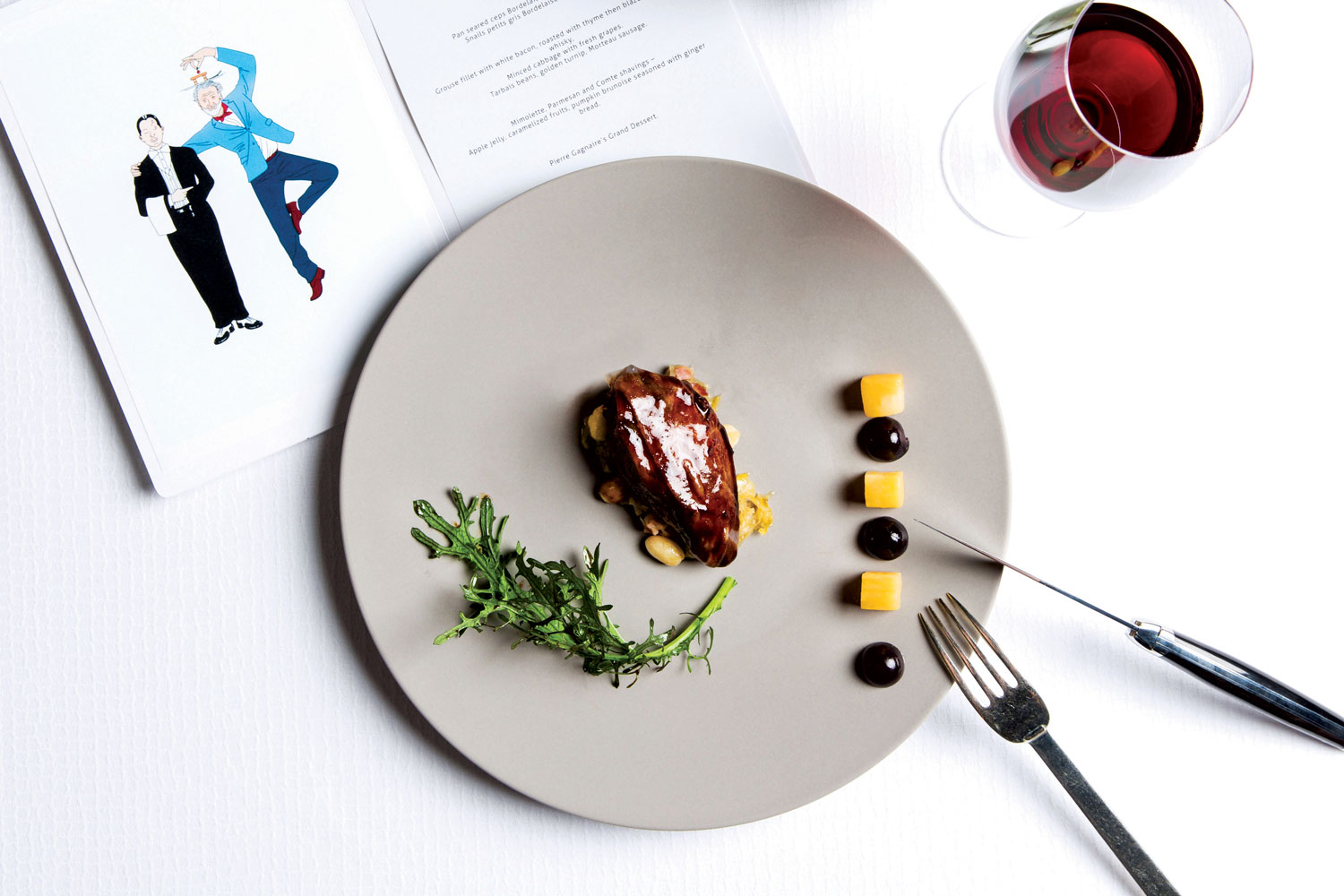
Today, he lives just minutes away from the Pierre Gagnaire in Paris (“Well, for one, I find the name fantastic!”) and visits daily. It’s partly because he is determined that each and every member of his team, in every country, knows who he is and what he stands for – but it’s also because he is still a man enchanted by his work. “If you have a restaurant and you do not enjoy food, it’s impossible to give emotion. Voila! You must have the talent, the heart, the emotion, the pleasure day after day to deliver the tenderness on the plate. It’s not just a job. It’s more than a job.” With a hint of sadness, he notes that he can no longer spend 15 hours in the kitchen anymore, but he does his best. And he has no plans to stop anytime soon.
When asked about retirement, he becomes agitated. “No, no, no – why? To take a plane? Take a plane to where? Will you pay for my ticket? What will I do?” He laughs at the ridiculous notion of Pierre Gagnaire, the former chef. “No, no. I have the chance to be free. When you stop, you’re dead.”
With that, the interview comes to a close. He has just one hour left in Hong Kong before flying to Vietnam and has promised to see an old friend. Oh, and if you’re wondering, his signature minimalist logo is a table, modelled after his own sketch. “I like this logo because it’s exactly what we’re doing here – not pretentious, but it’s me. It’s a table. Just a table.”
This article originally appeared in the December 2017 print issue of #legend


